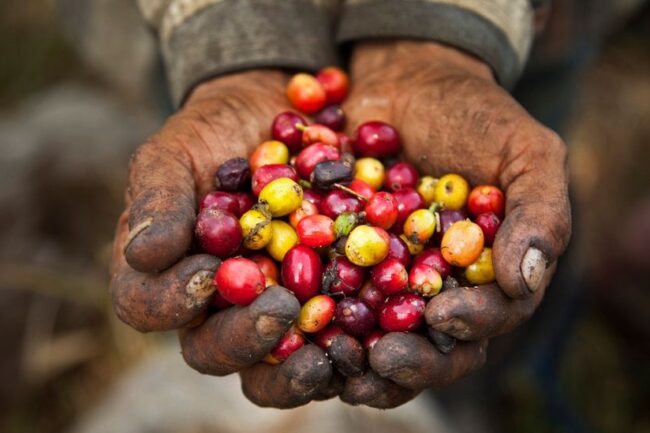December arabica coffee (KCZ22) on Friday closed down -0.15 (-0.08%), and Nov ICE Robusta coffee (RMX22) closed down -44 (-2.15%).

Coffee prices on Friday extended their month-long slide, with arabica falling to a 13-month nearest-futures low. Coffee prices have been under pressure over the past month on the outlook for a bumper coffee crop next year in Brazil. Beneficial weather in Brazil has aided the flowering of coffee trees and bolstered the outlook for next year’s coffee crop. Also, coffee harvest pressures in Brazil are a bearish factor for coffee prices. Coffee producer sales typically increase during harvest time to make space for storing their newly-picked crops.
Arabica recovered most of its losses Friday after a rally in the Brazilian real (^USDBRL) to a 1-1/2 week high against the dollar sparked short covering in arabica futures. A stronger real discourages export selling from Brazil’s coffee producers.
Coffee prices also found support Friday after consultancy firm Safras & Mercado cut its Brazil 2022/23 coffee production estimate to 57.3 mln bags from a previous estimate of 58.2 mln bags.
Abundant U.S. coffee supplies are bearish for coffee prices. The Green Coffee Association on Monday reported that U.S. Sep green coffee inventories rose +5.2% y/y to 6,378,478 mln bags.
Larger coffee exports from Brazil are bearish for prices after Cecafe reported last Tuesday that Brazil Sep green coffee exports rose +7.1% y/y to 3.1 mln bags.
Robust coffee supplies from Vietnam are bearish for prices. Vietnam’s General Department of Customs reported on Oct 7 that Vietnam exported 1.73 MMT of coffee in the 2021/22 season that ended Sep 30, a 4-year high. Vietnam is the world’s biggest producer of robusta coffee beans.
Tight arabica coffee bean supplies are bullish for prices after ICE arabica coffee inventories Thursday fell to a 23-year low of 392,727 bags.
A supportive factor for coffee prices is drier-than-normal conditions in Brazil’s coffee-growing areas. Somar Meteorologia reported Monday that Minas Gerais had 13 mm of rain last week, or only 41% of the historical average. Minas Gerais accounts for about 30% of Brazil’s arabica crop.
Signs of smaller global coffee supplies support prices after the International Coffee Organization (ICO) reported last Tuesday that global Aug coffee exports fell -1.9% y/y to 9.9 mln bags and that global coffee exports from Oct-Aug are down -0.3% y/y to 118.86 mln bags.
Arabica also has support from reduced coffee exports from Colombia. The Colombia Coffee Growers Federation reported last Monday that Colombia’s Sep coffee exports dropped -25% y/y to 820,000 bags. Also, Colombia’s Jan-Sep coffee exports are down -6.2% y/y at 8.58 mln bags. Colombia is the world’s second-largest producer of arabica beans.
In a bullish factor, Brazil’s crop agency Conab Sep 20 cut its 2022 Brazil coffee production estimate to 50.4 mln bags from a May estimate of 53.4 mln bags as adverse weather curbed coffee yields. This year was supposed to be the higher-yielding year of Brazil’s biennial coffee crop, but coffee output this year was slashed by drought.
In a bearish factor, the USDA, in its bi-annual report released on June 23, projected that 2022/23 global coffee production would climb +4.7% y/y to 174.95 mln bags, primarily due to Brazil’s arabica crop entering the on-year of the biennial production cycle. The USDA projects that 2022/23 global coffee ending stocks will climb +6.3% y/y to 34.704 mln bags.
__
Soure: Rich Asplund – Barchart




